Of the pelvis, hip, and femur exams, which ones can you shield for?
AP and Lateral distal femur
An AP proximal femur requires the affected leg to be rotated ___.
15-20 degrees internally
What is represented by letter A?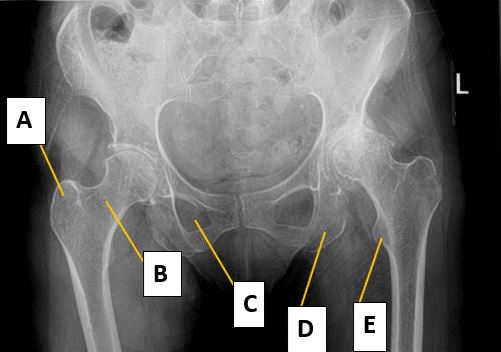
greater trochanter
Are grids typically used for lower toe, foot, ankle, and tib/fib exams?
no
What oblique of the foot will best demonstrate the space between first and second cuneiforms?
lateral
Which bones fuse and form the acetabulum?
ilium, ischium, and pubis
How should the CR be angled for an AP axial inlet projection?
40 degrees caudad
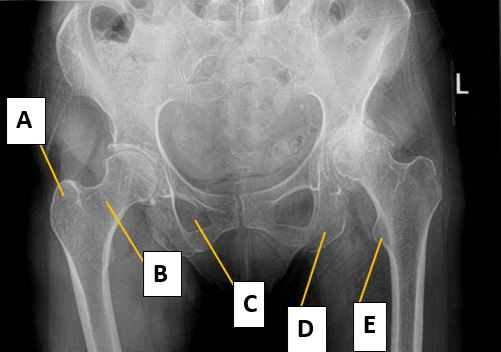 What is represented by letter B?
What is represented by letter B?
femoral neck
Which motion puts the foot and lower leg into a 90 degree angle at the ankle joint?
dorsiflexion
A medial oblique of the foot will demonstrate the space between which metatarsals?
4th and 5th
A more oval/heart shaped inlet describes a ___ pelvis.
male
What special projection can be used for a patient with limited movement in both lower limbs?
Clements-Nakayama Method
What is represented by letter C?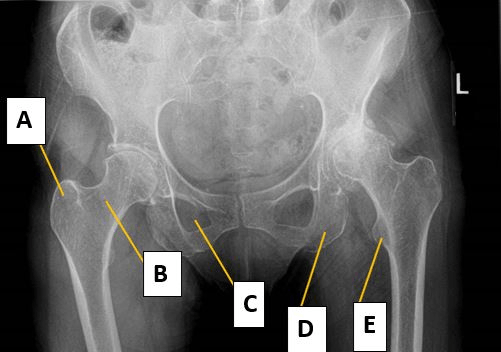
obturator formen
What mobility type is considered for most of the joints in the lower leg?
diarthrodial
How many degrees do you rotate the leg/foot for an AP mortise projection of the ankle?
15-20 degrees
A wider angle of pubic arch describes a ___ pelvis.
female
Which way is this patient rotated?
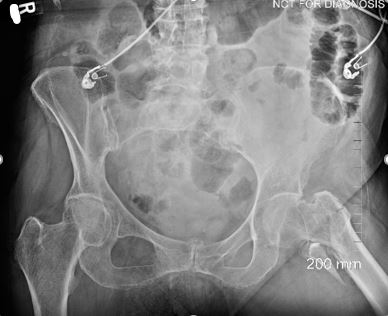
left
What is represented by letter D?

ischial tuberosity
Which bone of the foot has a prominent tuberosity that is frequently fractured?
5th metatarsal
Which malleolus is 15 degrees more posterior to the other?
lateral
Roting the feet and legs 15-20 degrees internally will make the lesser trochanters ___.
not visible/slightly visible
Is all anatomy included in this AP pelvis?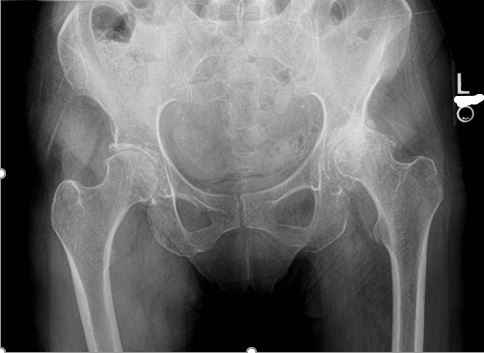
No
What is represented by letter E?
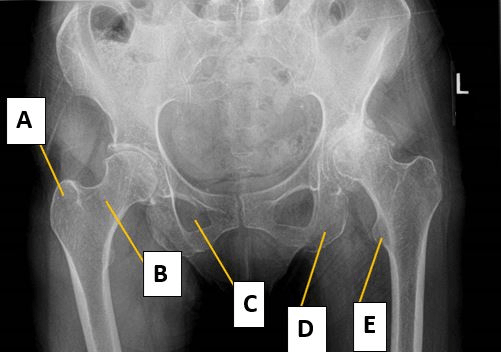
lesser trochanter
What bones make up the ankle joint?
tib, fib, talus
How much is the CR angled for an AP knee?
none